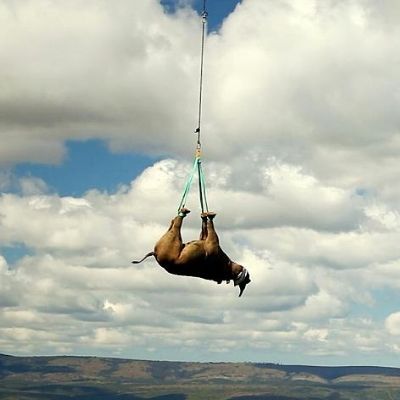To keep rhinos safe from poaching and to distribute individuals across habitats to ensure gene pools stay healthy, conservationists often must move rhinos from inaccessible, wilderness areas by helicopter.
But as transporting the enormous creatures can be a tricky manoeuvre, the rhinos need to be tranquillised. This allows them to be airlifted by their feet, which saves time and is thought to be kinder to the animals. While this transportation method has been used for ten years now, there has been debate over whether the anaesthetic drugs can be dangerous when the rhinos are hung upside down, as opposed to lying down on their side.
Researchers from Cornell University travelled to Waterburg National Park in Namibia, where they examined 12 rhinoceroses.
“We found that suspending rhinos by their feet is safer than we thought. [The practice] actually improved ventilation (albeit to a small degree) over rhinos lying on their sides,” said Dr Robin Radcliffe, senior lecturer in wildlife and conservation medicine and first author of the study. Read more

